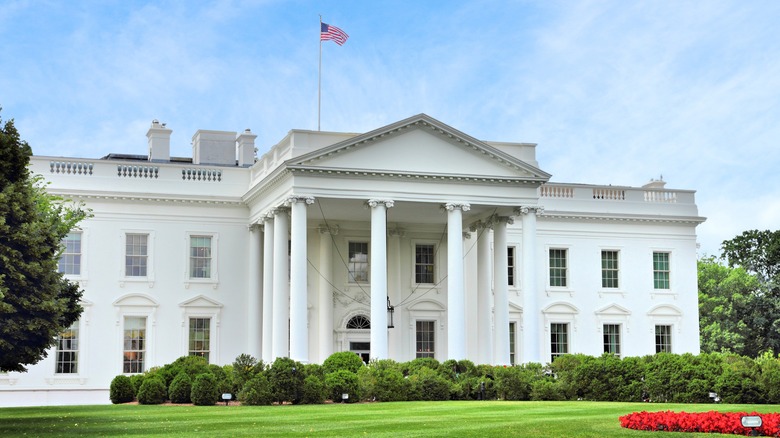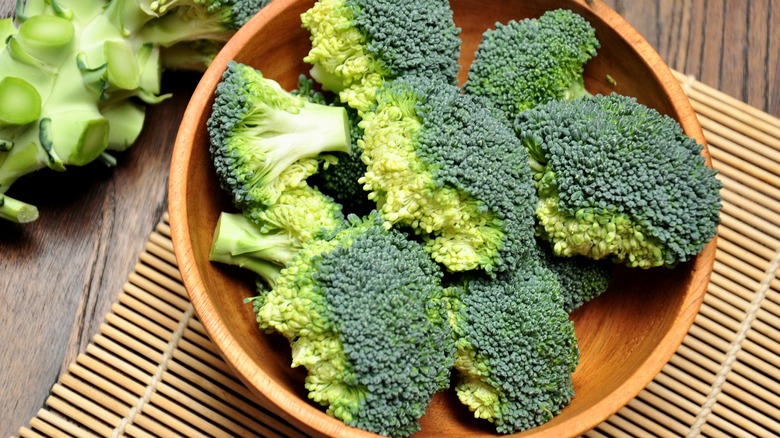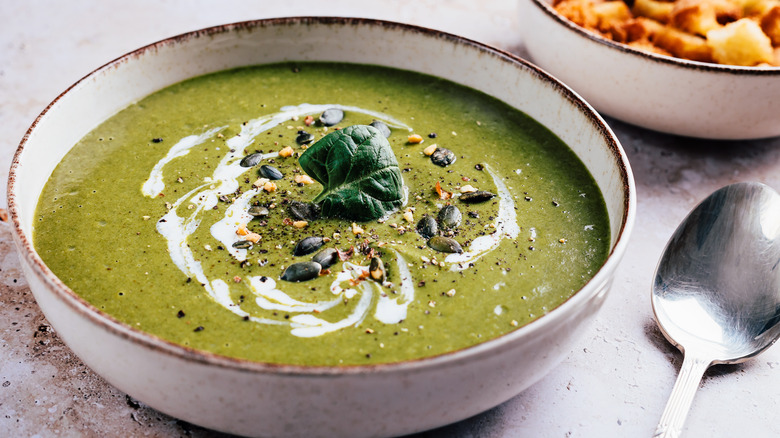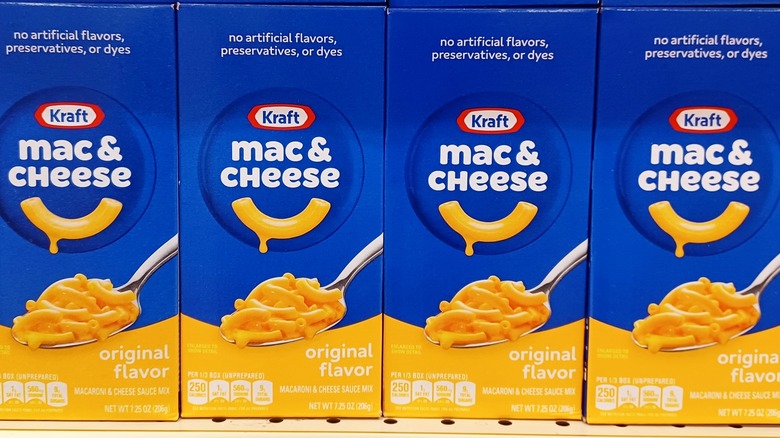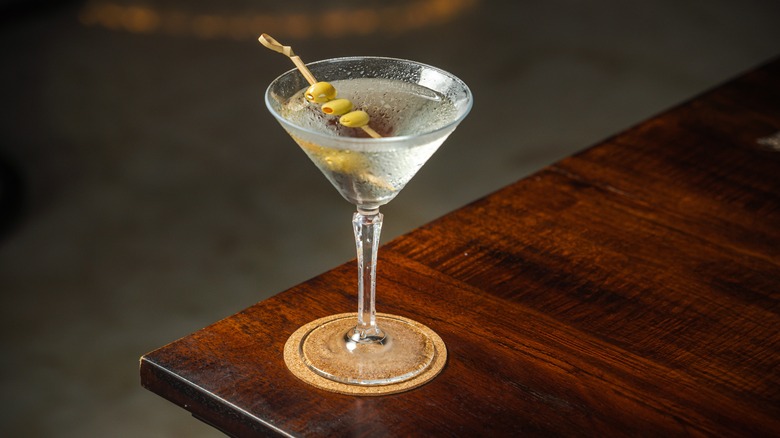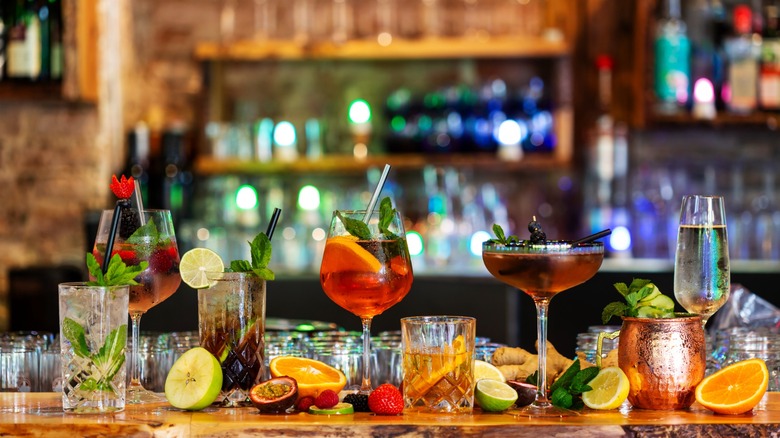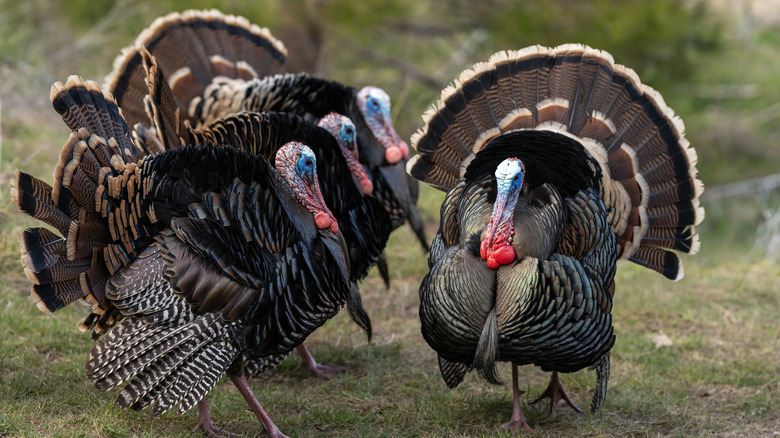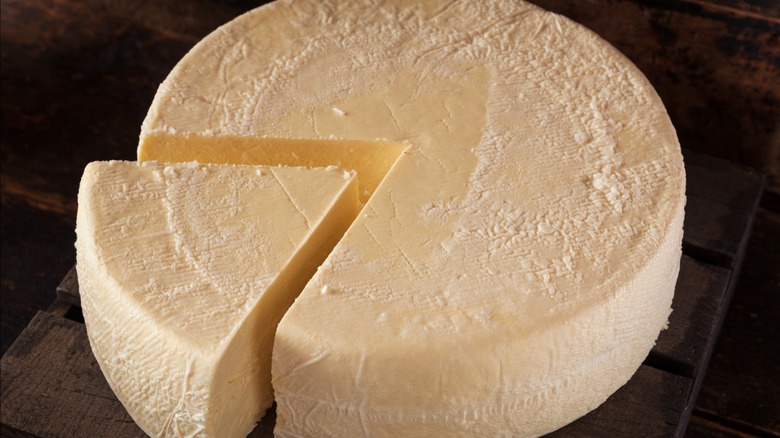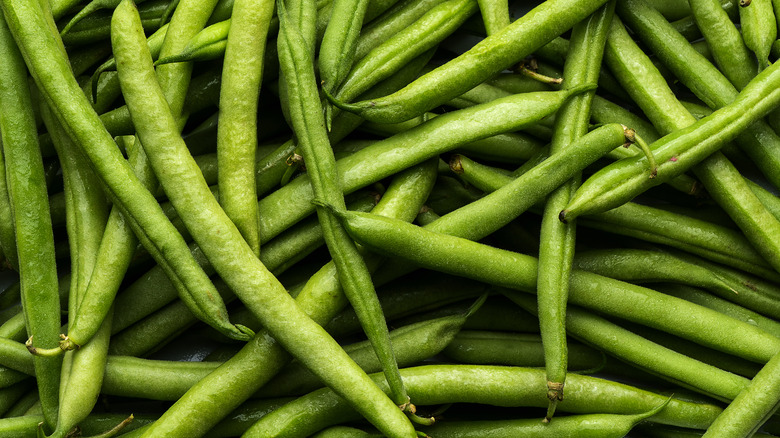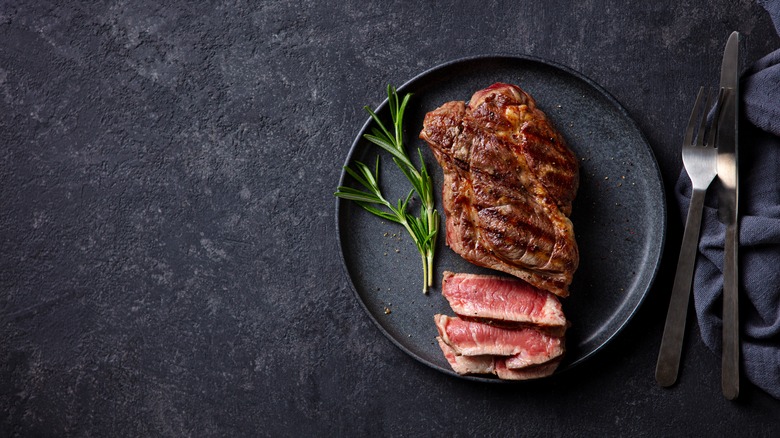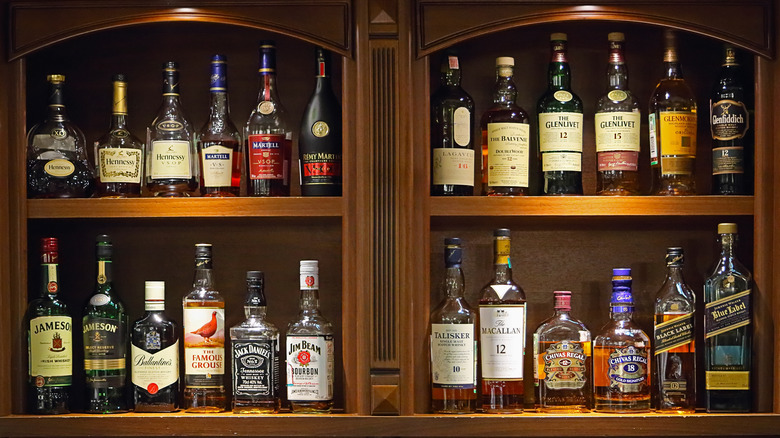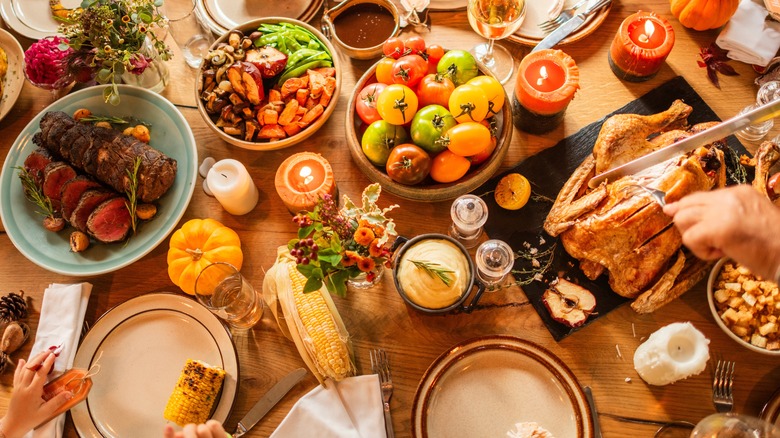Foods That Were Once Banned From The White House
Sure, it's fun to learn about favorite foods of the U.S. presidents throughout history, and even which wines each president favored while tackling one of the hardest jobs in the world. But what's maybe more intriguing is to discover foods presidents have banned entirely from the White House during their stay. Whether for personal or professional reasons, more than two centuries' worth of presidential pedigree provides a surprising wealth of scenarios in which banning food from the White House has been a whole thing for the leader of the free world.
Just what sorts of vittles were verboten among the administrations over the years? From commonly-known omissions like President Bush's ban on broccoli to less familiar restrictions like President Polk's refusal to allow alcohol (and dancing!) within the hallowed halls, the extended menu of foods forbidden from the White House is a wonky, wonderful smorgasbord of strangely selective limitations. Some are based on thoroughly understandable culinary boundaries, while others reflect distinctive personal tastes of each person to hold the office. But every White House food ban paints a picture of both the figure in question and the era they oversaw.
George H.W. Bush famously banned broccoli from the Peoples' House and Air Force One
It was well-known during President George H.W. Bush's administration that the Commander-in-Chief was not a fan of broccoli. But it really made news when the president announced that broccoli would be banned from Air Force One due to his intense distaste. Sure, he initially announced it with a touch of humor. This food ban made such waves, however, that it ultimately became one of the president's more defining non-political moments.
Rather than being kept on the down-low, this presidential food ban became a news story that circulated the world. It also helped to humanize a figure who literally carries the pressures of the whole world around inside of them. Knowing that it isn't just international politics and global diplomacy that stirs their souls but also the simple concerns about not being served vegetables they hate can make the most powerful person in the world seem downright normal. And for the record, First Lady Barbara Bush still enjoyed her broccoli in the White House; apparently, the ban only applied to the president's end of the table.
Richard Nixon nixed soup from the governmental menu
Richard Nixon may have pulled some sketchy stuff during his time in the White House, but one of his earliest dicey decisions involved eliminating soup from state dinners during his stint. Obviously, deciding what not to serve when hosting dignitaries is far less crucial than the colossal controversy that was Watergate, but the soup limitation made minor ripples in the early days of the Nixon administration.
It wasn't for nothing that President Nixon chose to keep bisque and bouillabaisse at bay while serving some of the most important figures on the international political scene. While hosting Canadian Prime Minister Pierre Trudeau at a White House dinner in 1969 shortly after his inauguration, the president spilled a bowl of soup down the vest of his suit. The incident angered him enough to use the slow pace of the dinners as an excuse to instate the no-soup rule to speed up the events. It was Nixon's personal valet who revealed the incident to Chief of Staff H.R. Haldeman, who'd been ordered to strike soup from future events. It may be inadvisable to cry over spilled milk, but if you have a reason for banning spilled soup, it's apparently a reasonable request.
The Obamas forbade boxed mac and cheese in the hallowed halls
Michelle Obama gained a reputation for mindful eating thanks to her insistence on having healthy food while her husband served his two terms in the White House. One of the items the first lady had a hand in restricting from the people's kitchen was mac and cheese, a home dining standard that most working parents would cherish for its easy preparation and ready availability. But the Obama family's staff chef was more mindful of what dinner could be for a family raising two growing girls.
Though they loved Kraft's famous blue box, First Daughters Malia and Sasha Obama were introduced to homemade mac and cheese by Chef Sam Kass, who had served as director of Michelle's Let's Move! campaign. As head cook for the family, he helped the Obamas transition to handmade mac and cheese made with real milk and actual cheese, a shift few parents would say "no" to. As an administration promoting healthy choices for young Americans, it was surely a relief to have someone who cooks for the president lead the charge, starting with the president's own menu.
Rutherford Hayes' wife Lucy restricted alcohol from onsite presidential functions
Another restriction on White House alcohol happened during Rutherford Hayes administration when his wife Lucy chose to eliminate liquor in all forms. Lucy's preference for temperance when it came to what was served in the White House crystal stemmed from her upbringing; she was raised by her grandfather, who was adamantly against the sinful ways of liquor consumption, beliefs that the first lady adhered to even after she was an adult.
President and First Lady Hayes didn't start his administration with the teetotaling policy in place. But after a dinner for Grand Duke Alexis of Russia where wine had been served freely and generously, the attention garnered put Lucy on notice. From that point forward, the Hayes White House observed a temperance stance where liquor of any kind was concerned. Mrs. Hayes felt it set a solid example for American wives and mothers who also had an example to set for the children of the country (though President Hayes wasn't averse to a nip every so often, a preference he set aside for the sake of his presidential image).
Jimmy Carter also prohibited hard alcohol from the premises
President Jimmy Carter was known for his humanitarian ways, which extended to restrictions for what sorts of beverages could be served in the White House during his presidency. His staunch beliefs and straight-edge approach to life resulted in a ban on hard liquor and spirits, even for visitors. It was a testament to President Carter's wholesome image that dinners were simple and homespun.
How did First Lady Rosalynn Carter respond to this standard of restraint being applied to what was her time in the White House? She would have preferred moderation instead of a total restriction, a distinction reflected in the occasional serving of wine during toasts. For a president who hardly drank alcohol, his support of legislation allowing beermakers to brew at home certainly had a major impact on the craft beer movement that came after his administration. Once the Carters vacated the White House, they more than made up for lost time by engaging in winemaking as part of their return to Georgia.
Abraham Lincoln pardoned the first turkey to free it from becoming a Christmas feast
Abraham Lincoln looms large in the pantheon of American presidents for a multitude of historic firsts represented by his administrations. But one of his lesser known achievements involves a particular sort of food ban in the White House that occurred for the first time while he occupied the position — though it wasn't so much a ban as it was a reprieve for potential White House food that had yet to become dinner.
It was President Lincoln who undertook the very first pardoning of the holiday turkey, a simple act that became an annual tradition carried forth by many presidents thereafter. As the story goes, in 1865, a live turkey arrived at the White House, fated to become Christmas dinner. A request made by Lincoln's son Tad to spare the life of the feathered fowl, affectionately named Jack. The president approved and set a standard that would be picked up on through the years at Thanksgiving instead of Christmas. Modern turkeys subject to the "ban" are retired to farms or animal havens to live out their lives in comfort rather than joining the First Family for dinner.
Martin Van Buren banned all food at receptions after a smelly encounter with a massive cheese
Personal taste seems to be the determining factor in what sorts of foods are banned from the White House, and for Martin Van Buren, forbidding any sort of food from receptions in the historic structure occurred due to a particularly nasty run-in with an oversized wheel of cheese. In a tradition begun by Thomas Jefferson, presidents would often receive ginormous cheeses as a gift from supporters. Every next leader's cheese was one-upped, inspiring legends about how long it actually took to finish eating these enormous wheels.
The buck stopped with President Van Buren, though, when his staff was forced to sanitize the White House after outgoing President Jackson served one of these mighty cheeses to 10,000 visitors during a celebration of George Washington's birthday. The stench was enough to put Van Buren off the idea of having any food during events in the President's Palace. Though the social contract among dignitaries in the president usually includes dinners and stately occasions where White House chefs show off their superior talents, Van Buren thought it better to steer clear of serving food entirely to avoid another potentially odiferous display. Considering his unpleasant experience, it sounds like he had a solid plan.
Lyndon B. Johnson didn't want to dine on green beans if the strings weren't entirely removed
So, maybe Lyndon B. Johnson didn't enact a full-blown food ban while he ran the U.S. and took up residence in the White House. In fact, LBJ was such a food lover, he'd frequently enjoy breakfast in bed, loved eating leftovers, and even created crucial policies during lunchtime sessions. But he did enlist a particular restriction that made plowing forward with the menu a bit trickier for his kitchen staff, especially when it came to preparing certain vegetables.
The peccadillo that prompted President Johnson's culinary constraints centered around strings being left on green beans after they had been prepared by kitchen staff. As the requested restriction went, if the strings could not be removed from the beans entirely, then they shouldn't be served at all. It doesn't sound like an unreasonable request, considering that basic prep for making green beans edible requires removing anything that is not the bean itself. In fact, it's probably a good rule to have in every house where string beans are served, not just the White House.
Ulysses S. Grant banned hard-boiled eggs from being used for the Easter Egg Roll
Not all food bans in the White House happened because the occupants weren't interested in consuming certain items. Sometimes, they were enacted to make sure food actually was being consumed as it should be rather than being used (read: wasted) as a holiday play thing. President Ulysses S. Grant recognized the trouble of rolling eggs on the White House lawn during the White House festivities during the Easter holiday. The ban enacted on this traditional Easter food being used as a plaything was intended to salvage the landscaping, though it also would have prevented a number of poultry-produced ovules from becoming potentially inedible, which sounds like a win-win.
The spirit of Easter returned with future presidents, when the Easter Egg Roll returned as an annual event. It seems like a benefit for saving both food and money for the White House to invest in a stock of plastic eggs to use instead, considering the ballooning prices of eggs. Maybe a return to the Grant-era ban is in order for the next administration.
Calvin Coolidge once refused to eat a raccoon for Thanksgiving
Maybe turkey isn't your thing for Thanksgiving; maybe you go for something a little more untraditional like ham or lasagna. But if you're like President Calvin Coolidge, you draw the line at woodland critters joining your White House holiday meal, even if they're presented as thoughtful gifts from the public. You don't even have to be the president to create such a culinary boundary in your own house. In fact, it may already be an unwritten rule.
When the Coolidges received the critter from a Mississippi admirer as a potential main dish for Thanksgiving dinner, the family found themselves smitten with her. Rather than sending her to her gastronomic destiny, they named her Rebecca and took her in as a household pet. By Christmastime, she'd been bestowed an embroidered collar that declared her the "White House Raccoon" and became a companion to First Lady Grace Coolidge. Rebecca brought joy to the White House residents and the American public. She even accompanied the family on vacations. And to think, she could have been an entrée instead.
Harry Truman put a stop to rare steak during his term
Sometimes a food ban in the White House is more of a specification of taste more than an outright declaration of unwillingness to eat a particular dish. Even presidential steak orders are subject to restrictions. President Harry S. Truman's White House ban on rare steak is an example that demonstrates the particular nature of presidential dining and exposes the specific taste each occupant brings with them when they move in. And since they're the one calling the shots in and out of the peoples' house, a restriction like this is actually small potatoes.
Why would someone presumed to be as worldly as a president preferred to have his steak cooked through and through? It turns out Truman had a one-liner that summed up his need for fully-cooked steak, noting, "Only coyotes and predatory animals eat raw beef." It's a pretty hilarious reason for President Truman to prefer his steak well-done, considering his access to the most gourmet culinary creations featuring rare and uncooked meats. Imagine how he must have felt about steak tartare!
James Polk and First Lady Sarah axed hard liquor (and dancing) during their tenure
It wouldn't be unusual to ban alcohol from the White House if you have religious convictions that call for abstinence, especially if you felt the weight of influencing an entire nation. Such as the case with President James Polk, whose wife Sarah was insistent there would be no liquor available within the walls of the Executive Mansion. It was her dedication to her Presbyterian religion that led to such a hard line on even an occasional drink being served in the White House.
But the buzzkill policy didn't stop there. The first lady also put the kibosh on dancing in the White House, as well as card games, all in the name of maintaining propriety for everyone who entered there. Imagine how exciting their parties must have been. If you've ever envisioned the White House as a stuffy place where stuffy people do stuff things, the ban-happy administration of the Polk presidency is one that proves that image to be true.
Franklin and Eleanor Roosevelt banned decadent food to maintain Depression-era standards
There's no question that Franklin Delano Roosevelt issuing a ban against decadent food in the White House during his administration was more than just an expression of epicurean peculiarity. During the years of the Great Depression, food was scarce for Americans throughout the country, which prompted the president to issue a ban on decadent food that would have been afforded a world leader of his status. But the president and his influential wife, Eleanor, couldn't conscionably indulge in haute cuisine while others were waiting in bread lines and scrounging for scraps. Not only would it have been unseemly, it would have been a slap in the face of citizens watching their leader live high on the hog while they struggled just to keep their families fed.
To make sure the family walked the line along with the citizens they led, the Roosevelts hired Henrietta Nesbitt, a former friend of Eleanor's, to revamp the White House kitchen and help create frugal menus using inexpensive ingredients and food rations. This reflected the same diet as the average American, and though the austerity dishes were notoriously unpleasant, the White House ban on living high on the hog displayed a dignity and respect for their constituents that was far more important to the Roosevelts than dining well.
